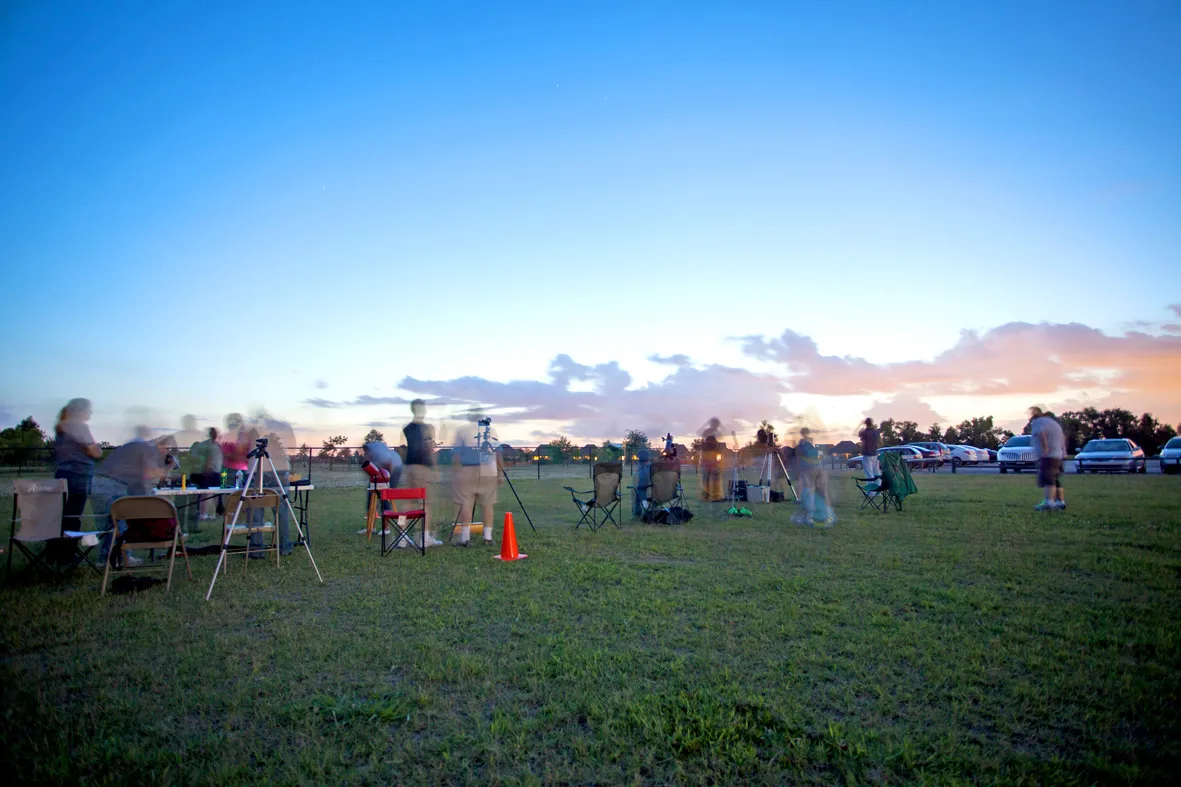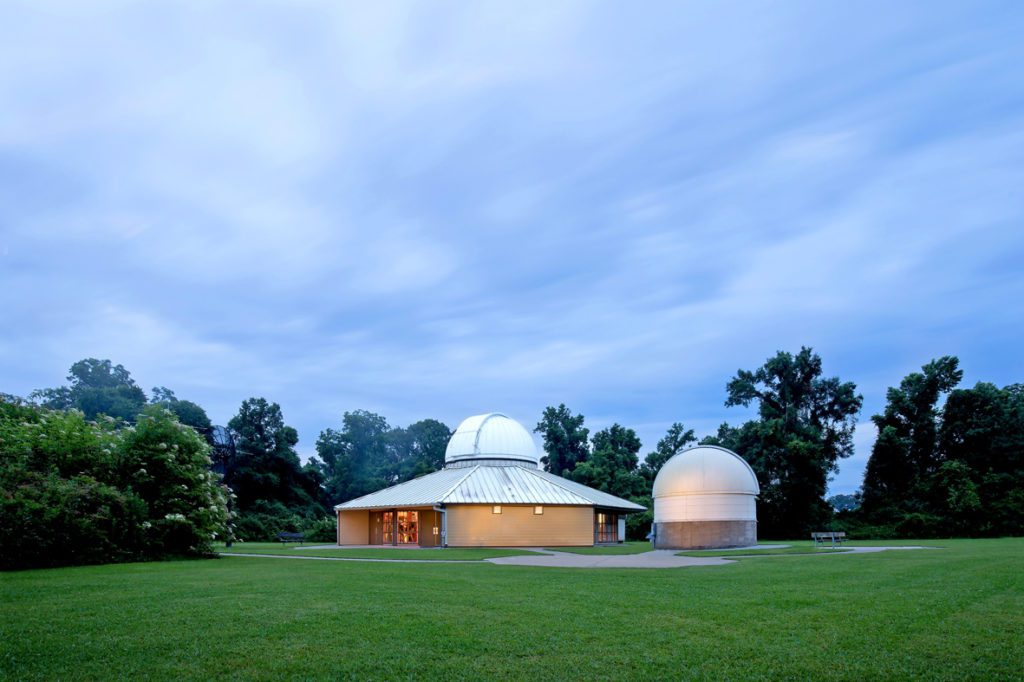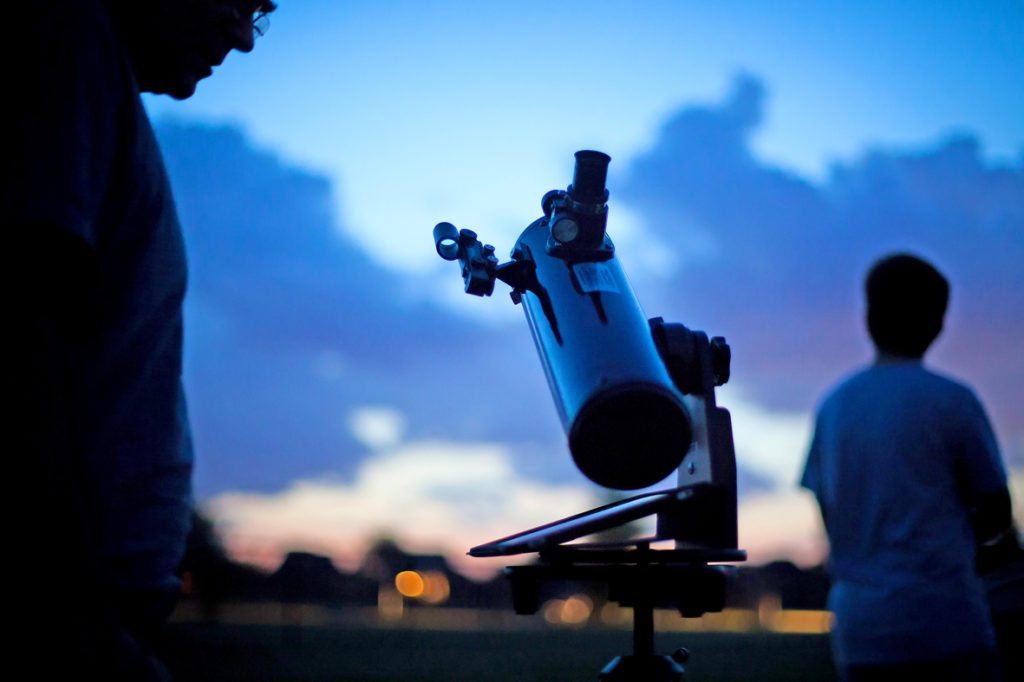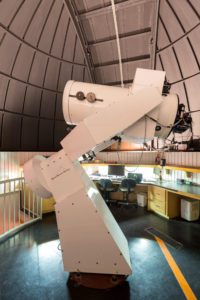
Star Struck: Everyday astronomy at Highland Road Park Observatory
It’s 7:30 p.m. on a Friday. Many people are immersed in their weekend plans—finalizing brunch times, planning family outings and confirming shopping sprees. But for the Highland Road Park Observatory staff, it is a time to teach, observe and connect with Baton Rouge space enthusiasts.
Every Friday night, the observatory hosts lectures that are free to the public and culminate with a viewing of the night sky. Monstrous water oak trees that seem to guard this somewhat secret society of space aficionados shield the meeting room and large reflecting telescopes from a driver’s fleeting glance. The meeting room is complete with folding chairs and a large projector screening the night’s topic, while did-you-knows and common myths are posted on the walls for inquisitive newcomers.
The observatory opened in 1997, and the lectures were conceived soon afterward. Back then, the series took the form of a Friday-night campfire program for families, but the staff eventually wanted to make the lectures more formalized and to give guest speakers the opportunity to use electronics within their presentations. Now the talks are much more structured, often taught by LSU professors or NASA officials, and are targeted mainly toward an adult crowd.

The wide array of lecture topics ranges from the Martian mystique and new NASA technology to the Chinese calendar and the crash of the Hindenburg. As the subjects vary, so do the crowds in attendance.
“We get anywhere from nobody on up to over 100 people on a Friday night,” says observatory manager Chris Kersey. “Baton Rouge Astronomical Society members come in, standard groups, college and high school kids coming for extra credit, and sometimes even church groups surprise us. Specific topics will attract different crowds, and the weather also plays a part in how many people come.”
For first timers like Raina Wirta, who recently spent a Friday evening here, the lectures and viewing represent an opportunity to learn more about the vastness of space with others who are similarly interested.
“I was looking at the planets that are closest to Earth right now and figured I would come to see them, but the weather wouldn’t allow that,” Wirta says of her first visit. “But then I saw the lecture topic and thought it sounded pretty interesting. I’m always open to learn more, especially when it involves other people who are just as curious as I am.”
Other longtime, regular lecture attendees have decided favorites among the many Friday night lectures.
“We have been coming to these lectures for as long as the park has been open,” says Daniel Smith, who was accompanied by his wife Mariam at a recent lecture. Adds Mariam, “The UFO speech every year is interesting just because it gets a much more varied crowd. Their special events, like the Pluto and Mars big speeches, are some of our favorites.”
A big part of each Friday evening’s festivities is the viewing that follows the talk, but the weather occasionally restricts this longtime tradition. Another major factor that inhibits the visibility of the stars and planets is light pollution. Although the observatory’s location off Highland Road in south Baton Rouge is in an area that lacks an abundance of city lights—compared to downtown—it can still be a struggle to see certain objects due to interference from streetlights and other manmade light sources.
“It’s very difficult to see things sometimes. Light pollution doesn’t affect the moon or planets, but deep sky stuff it definitely does,” Kersey says. “Light pollution lowers the contrast. The best way to see a bright object is to see it against a very black background, and light pollution changes that black background to gray, and in the cases of downtown areas, almost white.”

In the downtown area, where there is the most light pollution, Kersey says that most street lamps have two bulbs facing the same way, whereas in other parts of the city, street lamps can manage with just one bulb. Things like this contribute to the amount of light pollution throughout the city and hinder the visibility of certain objects in space. The observatory has monthly meetings concerning the pollution issue, where attendees try to come up with solutions to minimize the problem.
As for upcoming major space events, Kersey says there is always something to be looking out for, as Earth is in constant rotation with other planets.
“We’re getting the summer sky right now, so Scorpio and Sagittarius will be rising, and that is in the direction of the center of the Milky Way, so there is a lot of globular clusters and nebula to look at,” Kersey says. “We have Mars here for the next few months, Saturn the rest of the summer, and Uranus and Neptune in the fall. We are also open for the Perseid meteor shower in August.”
Although the lectures bring in an audience that is relatively small, the community that shows up reaffirms the notion that people want to have the option to learn more about the enormity of space.
“It’s always good to know what the newest thing is, especially when it’s local stuff, like the LIGO gravitational waves stuff a few months back,” Daniel Smith says. “The lectures are definitely a great way to learn more about what is currently going on in space, and it’s a free activity. What can beat that?”
Eyes on the sky in July
Here are a few of the events on the Highland Road Park Observatory’s July schedule:












